
The Muroidea are a large superfamily of rodents, including mice, rats, voles, hamsters, lemmings, gerbils, and many other relatives. Although the Muroidea originated in Eurasia, they occupy a vast variety of habitats on every continent except Antarctica. Some authorities have placed all members of this group into a single family, Muridae, due to difficulties in determining how the subfamilies are related to one another. Many of the families within the Muroidea superfamily have more variations between the families than between the different clades. A possible explanation for the variations in rodents is because of the location of these rodents; these changes could have been due to radiation or the overall environment they migrated to or originated in. The following taxonomy is based on recent well-supported molecular phylogenies.

The Old World rats and mice, part of the subfamily Murinae in the family Muridae, comprise at least 519 species. Members of this subfamily are called murines. In terms of species richness, this subfamily is larger than all mammal families except the Cricetidae and Muridae, and is larger than all mammal orders except the bats and the remainder of the rodents.
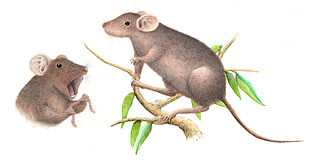
Apomys, commonly known as earthworm mice, is a genus of rodent endemic to the Philippines. Mice belonging to this genus are generally called Philippine forest mice and can be found on most islands of the Philippines except in Palawan, the Sulu Archipelago, and the Batanes and Babuyan group of islands.

Batomys is a genus of rodent endemic to the Philippines. It has six extant described species.
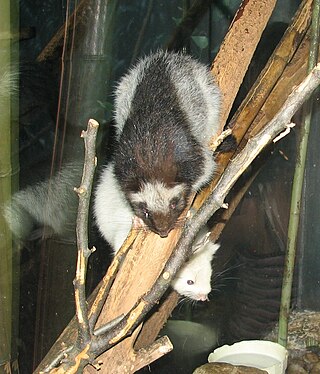
The cloud rats or cloudrunners are a tribe (Phloeomyini) of arboreal and nocturnal herbivorous rodents endemic to the cloud forests of the Philippines. They belong to the family Muridae and include five genera: Batomys, Carpomys, Crateromys, Musseromys, and Phloeomys. They range in size from as large as 50 cm (20 in) to as small as 74 mm (2.9 in). Cloud rats are threatened by habitat loss and illegal hunting. Several species are endangered or critically endangered.

The shrewlike rats, genus Rhynchomys, also known as the tweezer-beaked rats are a group of unusual Old World rats found only on the island of Luzon in the Philippines. They look a great deal like shrews and are an example of convergent evolution. Shrewlike rats evolved to be vermivores and insectivores feeding on soft-bodied invertebrates associated with leaf litter.

Archboldomys, the shrew-mice, are a genus of rodents in the family Muridae. They are carnivores that feed on invertebrates much like shrews do. An apparently smaller relatives of the true shrew-rats Chrotomys and Rhynchomys, Archboldomys are somewhat convergent to the more distantly related Crunomys.
Hylomyscus is a genus of rodent in the family Muridae endemic to Africa.

The Mindanao mountain rat or long-tailed moss mouse, is a species of rodent in the family Muridae. It is found only in the Philippines, where it is present at high altitudes in the Kitanglad Mountain Range on the island of Mindanao.
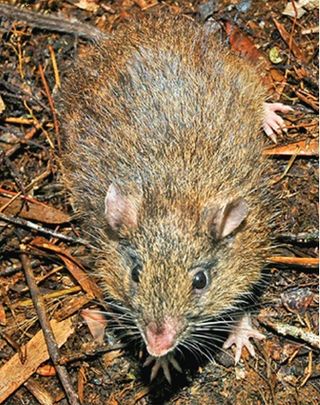
The Hamiguitan hairy-tailed rat is one of five species of rodent in the genus Batomys. It is in the diverse family Muridae. This species is found only in the Philippines. is a yellow-brown animal with a long furry tail, weighs about 175 grams, and is related to several other species known in Central Mindanao, Dinagat Island and Luzon. It lives only in an area that's at least 950 meters high, and in dwarf mossy forests less than 10 square kilometers.
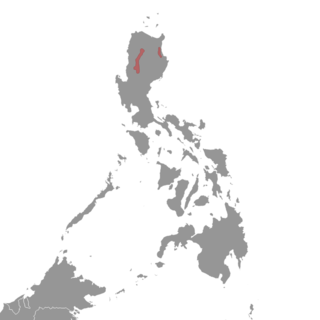
The Sierra Madre shrew mouse is a species of mammal from the Philippines.

The Katanglad shrew-mouse, also known as the Kitanglad shrew-mouse is a species of rodent in the family Muridae. It is known only from one specimen taken at 2250 m on Mount Kitanglad, Bukidnon Province, Philippines.
In mammals, ungual tufts are tufts of hairs at the base of claws of the forefeet and hindfeet. Their presence has been used as a character in cladistic studies of the Cricetidae, a large family of rodents.

The Kalinga shrew mouse is a rodent of the genus Soricomys found in the northern province of Kalinga, island of Luzon, in the northern Philippines.
William T. Stanley was an American mammalogist who was a manager of the collections at one of the world's largest natural history museums and a student of the mammals of eastern Africa. He was an evolutionary biologist and mammalogist, and at the time of his death was the director of the Field Museum of Natural History's Collections Center and the Collection Manager of the Field Museum's Collection of Mammals. Stanley studied the biogeography, ecology, evolution, and systematics of shrews, bats and rodents that live on mountains within Tanzania and surrounding countries.
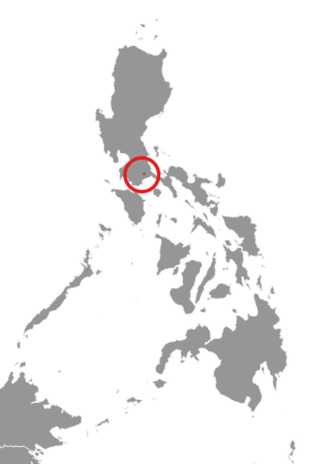
The Banahao shrew-rat is a species of rodent in the genus Rhynchomys. It was described in 2007.

Soricomys, the shrew-mice, are a genus of rodents in the family Muridae. They are carnivores that feed on invertebrates much like shrews do. An apparently smaller relatives of the true shrew-rats Chrotomys and Rhynchomys, Soricomys are somewhat convergent to the more distantly related Crunomys.
The Labo shrew rat is a species of shrewlike rat in the subfamily Murinae. It was discovered at elevations above 1250 m on Mt. Labo of the Bicol Peninsula of Luzon in the Philippines and described in 2019.
The Mingan shrew rat is a species of shrewlike rat in the subfamily Murinae. It was discovered at elevations above 1450 m on Mt. Mingan of the central Sierra Madre of Luzon in the Philippines and described in 2019.
Danilo S. Balete, also known as Danny Balete, was a Filipino zoologist and biologist. His is known for his work on the Philippines' endemic mammal species. He pursued the question of what determines species diversity. The research by Balete and his team overturned previously held notions that diversity decreased in mountainous regions, showing that harsh environments could generate, rather than suppress, species diversity.











